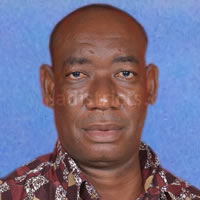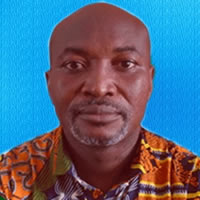The improvement of the Educational sector is paramount to the District development as it is the main determinant of the nature and caliber of its human resource. The table below shows the number of schools in the District.
Number of Schools by Category 2008/2009
Public Private Total
KG 54 0 54
Primary 72 11 85
JHS 19 0 19
SHS 1 0 1
The District is estimated to have over 250 communities; from the table above it means the District still needs more schools to be established in the communities to make education accessible to every community.
Circuits in the District
From the table below, it could be seen that the distribution of schools is skewed in favour of Kpandai Circuit which is the District Capital. This implies that more schools are needed to be established in the other circuits especially the Wiae and Lonto Circuits.
Table 1.19: Circuits and their Schools
Circuits No. of Schools
KG Primary JHS SHS Total
Kpandai 12 17 6 1 36
Katiejeli 8 10 2 0 20
Kumdi 4 16 2 0 22
Kabonwule 11 15 3 0 29
Wiar 6 9 2 0 17
Lonto 6 11 2 0 19
Jamboai 9 13 2 0 24
Total 56 91 19 1
Source: District Directorate of GES, 2009
Staffing Situation in the Schools
The teacher situation in the District is very bad compare to the Ghana Education Service standards. The table below shows the staffing situation in the schools in the District
Table 1.20: Staffing in Schools
Level Number of Teachers
Male Female Total
KG 0 35 35
Primary 146 11 157
JHS 69 6 75
SHS 30 0 30
Source: District Directorate of GES, 2009
Out of 35 teachers at the KG level only 6 of them are trained. It is therefore not acceptable to have very high non professional teachers at the KG level, if foundation of children’s education is to be very strong.
The situation at the primary level is not different, while the total number of teachers is 157, out of this only 54% are trained against 57% untrained. A similar situation prevails at the JHS and SHS levels. It therefore implies that the District should sponsor more teachers into the Teacher Training Colleges to augment the trained teachers situation in the schools.
Pupil Teacher Ratio (PTR)
Considering the enrolments at the KG and Primary levels against the total number of teachers, one could see that PTR is at unacceptable levels of 250:1 and 105:1 at KG and Primary respectively. This calls for more teachers in the District. The table below shows the PTR at various educational levels.
Table 1.21: Pupil Teacher Ratio
Level Enrolment for 2009/PTR
Boys Girls Total PTR(2009) Standards
KG 3,116 3,131 6,247 250:1 25:1
Primary 8,810 7,673 16,483 105:1 33:1
JHS 1,759 1,095 2,854 38:1 25:1
SHS 704 257 961 32:1 30:1
Source: District Directorate of GES, 2009
Gross Enrolment Rate (GER)
GER measures the total enrolment in a given educational level (irrespective of age) expressed as a percentage of the corresponding official age for that level. Therefore, gross primary school enrolment rate for boys (male) and girls (female) in 2009/2010 academic year are 68.7 and 60.7 respectively.
The total district gross primary school enrolment rate is 64.7, implying that more children are still outside the classroom as indicated on the bar graph below. To solve this, the District Education Office needs to embark on the enrolment drive and sanctification in the school communities.
This is the number of pupils who manage to complete JHS 3 in a given year over the number of pupils who enter JHS 1 in that particular year expressed as a percentage. From the graph below, the JHS completion rates for both boys and girls are 80.7 and 60.1 respectively in 2009/2010 academic year.
The total JHS completion rate in the district is 70.4 for the same academic year. This implies that the JHS completion rate in the district for JHS is generally high but that of girls is low. There is the need therefore to encourage more girls to be retained in the schools and also encourage more girls to be enrolled.
School Infrastructure
There are a number of on-going and completed school building projects in the district. These projects are funded by DWAP, EU Micro Projects Programme, GETFund, NORPREP and CBRDP among others. With the increasing number of school children of school going age, there is the need for more interventions. Supporting facilities like furniture and equipment are still inadequate and in some cases completely lacking. The table below shows schools without standard structures,
Table 1.22: Schools without Standard Structures 2008/2009
Public Private Total
KG 53 0 53
Primary 50 7 57
JHS 5 - 5
SHS 1 - 1
School Feeding Programme
Currently there are 10 schools benefitting from the School Feeding Programme in the District. The schools are:
Kitare Primary
Kojobone Primary
Kabonwule Almighty International
Okyerepe Presby Primary
Mbowura D/A Primary
Kpandai D/A Primary
Katiejeli E/A Primary
Wiae Tagbegben Primary
Kabeso Presby Primary
Kumdi West Bank Primarty
The general challenges of education in the district include: low level of gross enrolment of pupils especially the girl-child, poor and inadequate school infrastructure, inadequate furniture, high percentage of untrained teachers, inadequate teachers accommodation, lack of sanitation facilities at schools, lack of adequate teaching and learning materials, inadequate trained teachers , dormant PTAs and SMCs.
Date Created : 11/18/2017 6:22:50 AM





 facebook
facebook twitter
twitter Youtube
Youtube TOLL FREE 0800 430 430
TOLL FREE 0800 430 430 +233 593 831 280
+233 593 831 280 GPS: GE-231-4383
GPS: GE-231-4383 info@ghanadistricts.com
info@ghanadistricts.com Box GP1044, Accra, Ghana
Box GP1044, Accra, Ghana